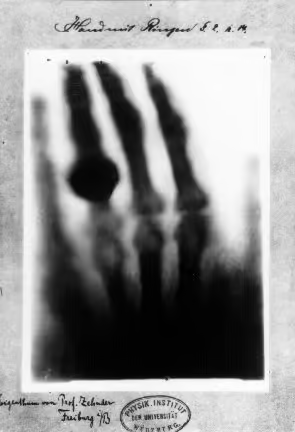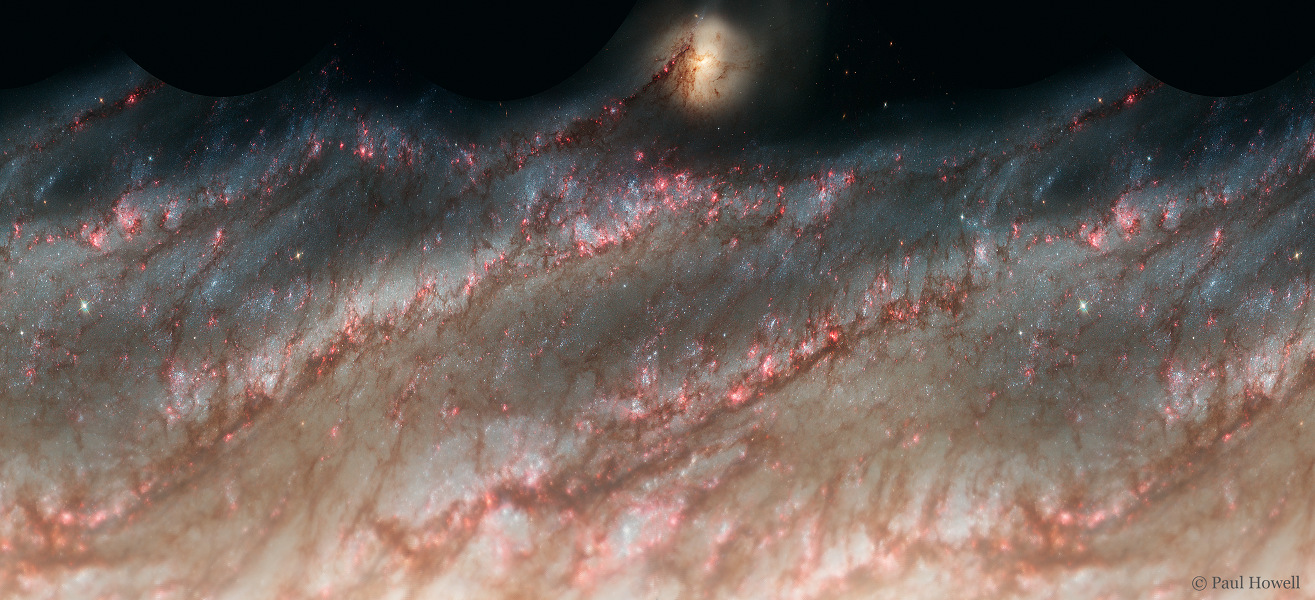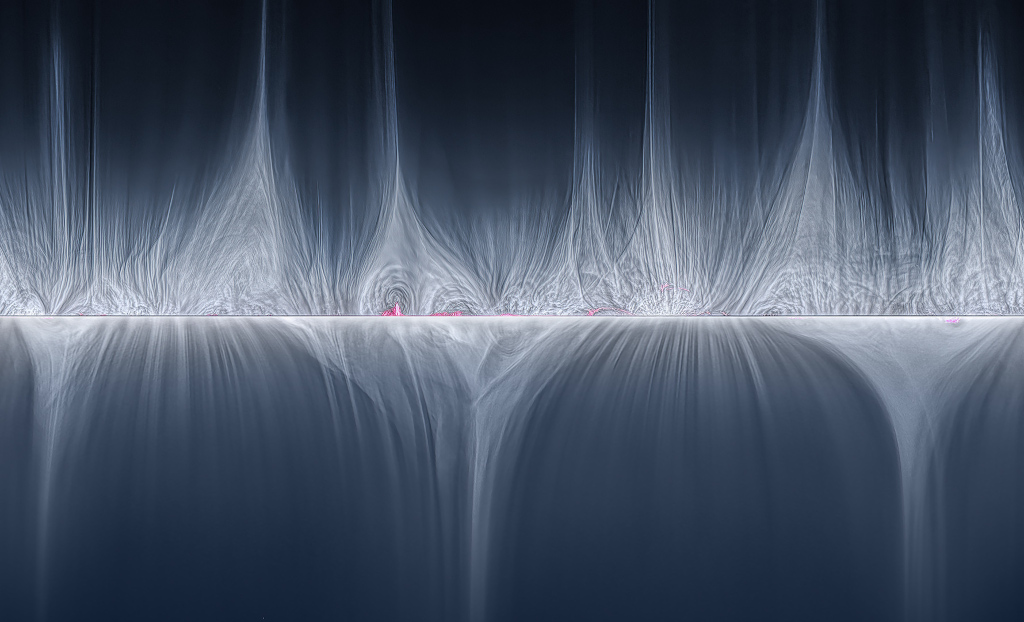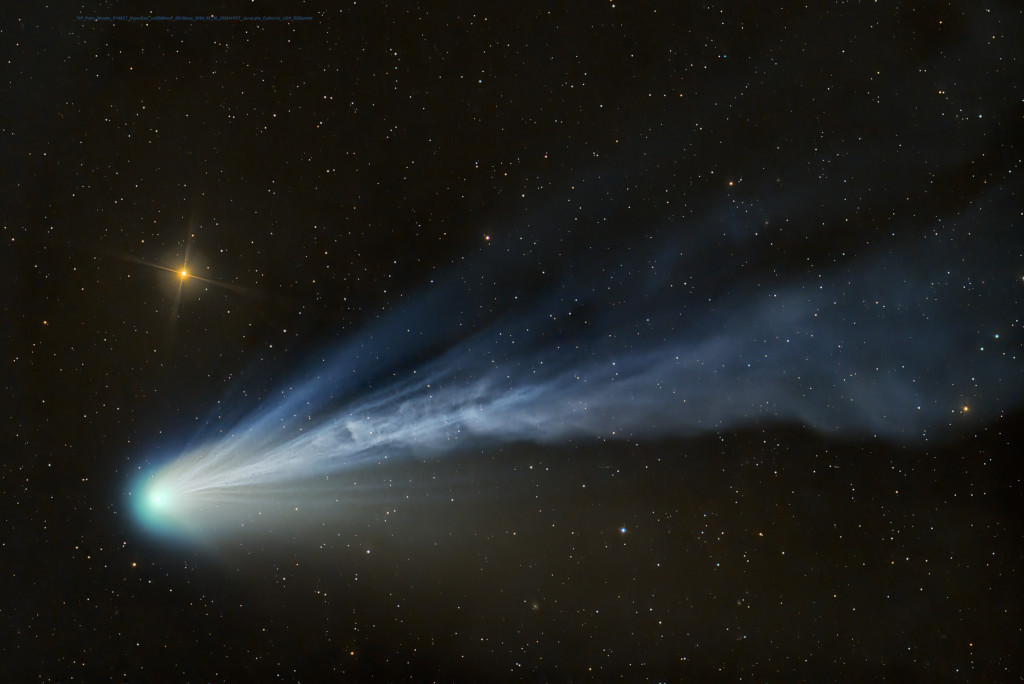
Nombre total de pages vues
07/04/2024
SANTé/MEDECINE - Histoire - 1895 : découverte des rayons X par Röntgen

ASTRONOMY - A Total Solar Eclipse over Wyoming
2024 April 7
Image Credit & Copyright: Ben Cooper
Explanation: Will the sky be clear enough to see the eclipse? This question is already on the minds of many North Americans hoping to see tomorrow's solar eclipse. This question was also on the mind of many people attempting to see the total solar eclipse that crossed North America in August 2017. Then, the path of total darkness shot across the mainland of the USA from coast to coast, from Oregon to South Carolina -- but, like tomorrow's event, a partial eclipse occurred above most of North America. Unfortunately, in 2017, many locations saw predominantly clouds. One location that did not was a bank of the Green River Lakes, Wyoming. Intermittent clouds were far enough away to allow the center image of the featured composite sequence to be taken, an image that shows the corona of the Sun extending out past the central dark Moon that blocks our familiar Sun. The surrounding images show the partial phases of the solar eclipse both before and after totality.
06/04/2024
SANTé/MEDECINE - Le fonctionnement de l'oeil humain - La synthèse additive

SANTé/MEDECINE - HISTOIRE - 1885 : découverte du vaccin contre la rage par Louis Pasteur

ASTRONOMY - Unwinding M51
2024 April 6
Image Credit & Copyright: Data - Hubble Heritage Project, Unwinding - Paul Howell
Explanation: The arms of a grand design spiral galaxy 60,000 light-years across are unwound in this digital transformation of the magnificent 2005 Hubble Space Telescope portrait of M51. In fact, M51 is one of the original spiral nebulae, its winding arms described by a mathematical curve known as a logarithmic spiral, a spiral whose separation grows in a geometric way with increasing distance from the center. Applying logarithms to shift the pixel coordinates in the Hubble image relative to the center of M51 maps the galaxy's spiral arms into diagonal straight lines. The transformed image dramatically shows the arms themselves are traced by star formation, lined with pinkish starforming regions and young blue star clusters. Companion galaxy NGC 5195 (top) seems to alter the track of the arm in front of it though, and itself remains relatively unaffected by this unwinding of M51. Also known as the spira mirabilis, logarthimic spirals can be found in nature on all scales. For example, logarithmic spirals can also describe hurricanes, the tracks of subatomic particles in a bubble chamber and, of course, cauliflower.
05/04/2024
SANTé/MEDECINE - Fonctionnement de l'oeil humain - Schéma d'une coupe transversale de l'œil
ASTRONOMY - The Solar Corona Unwrapped
2024 April 5
Image Credit & Copyright: Peter Ward (Barden Ridge Observatory)
Explanation: Changes in the alluring solar corona are detailed in this creative composite image mapping the dynamic outer atmosphere of the Sun during two separate total solar eclipses. Unwrapped from the complete circle of the eclipsed Sun's edge to a rectangle and mirrored, the entire solar corona is shown during the 2017 eclipse (bottom) seen from Jackson Hole, Wyoming, and the 2023 eclipse from Exmouth, Western Australia. While the 2017 eclipse was near a minimum in the Sun's 11 year activity cycle, the 2023 eclipse was closer to solar maximum. The 2023 solar corona hints at the dramatically different character of the active Sun, with many streamers and pinkish prominences arising along the solar limb. Of course, the solar corona is only easily visible to the eye while standing in the shadow of the Moon.
04/04/2024
SANTé/MEDECINE - HISTOIRE - 1882 : découverte du bacille de Koch et début de la bactériologie

INVENTEURS TUéS PAR LEURS CREATIONS - Alexander Bogdanov

ASTRONOMY - Comet Pons-Brooks at Night
2024 April 4
Image Credit & Copyright: Dan Bartlett`
Explanation: In dark evening skies over June Lake, northern hemisphere, planet Earth, Comet 12P/Pons-Brooks stood just above the western horizon on March 30. Its twisted turbulent ion tail and diffuse greenish coma are captured in this two degree wide telescopic field of view along with bright yellowish star Hamal also known as Alpha Arietis. Now Pons-Brooks has moved out of the northern night though, approaching perihelion on April 21. On April 8 you might still spot the comet in daytime skies. But to do it, you will have to stand in the path of totality and look away from the spectacle of an alluring solar corona and totally eclipsed Sun.
SANTé/MEDECINE - La grossesse mois par mois - 6ème et 7ème mois
Le fœtus à 6 et 7 mois de grossesse Le futur bébé prend du poids. Les proportions tête-corps sont plus harmonieuses. Il ouvre les yeux . Sa ...

-
2022 September 26 All the Water on Planet Earth Illustration Credit: Jack Cook, Adam Nieman, Woods Hole Oceanographic Institution ; Data ...
-
2021 August 11 Mammatus Clouds over Saskatchewan Image Credit & Copyright: Michael F Johnston Explanation: When do cloud bottoms appe...




